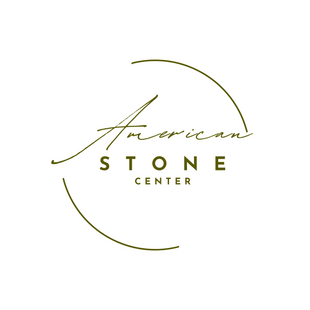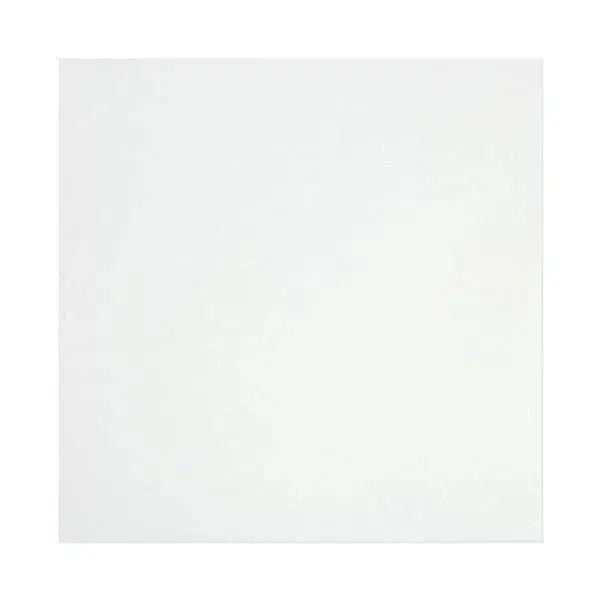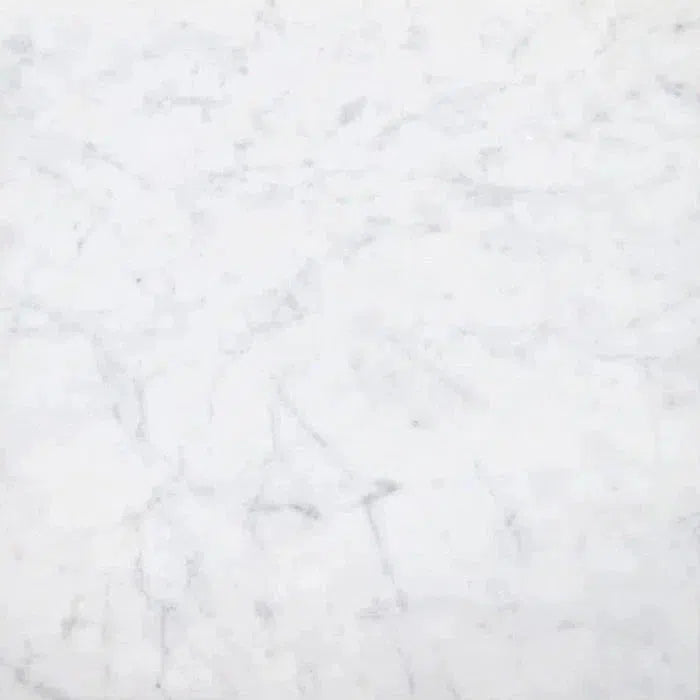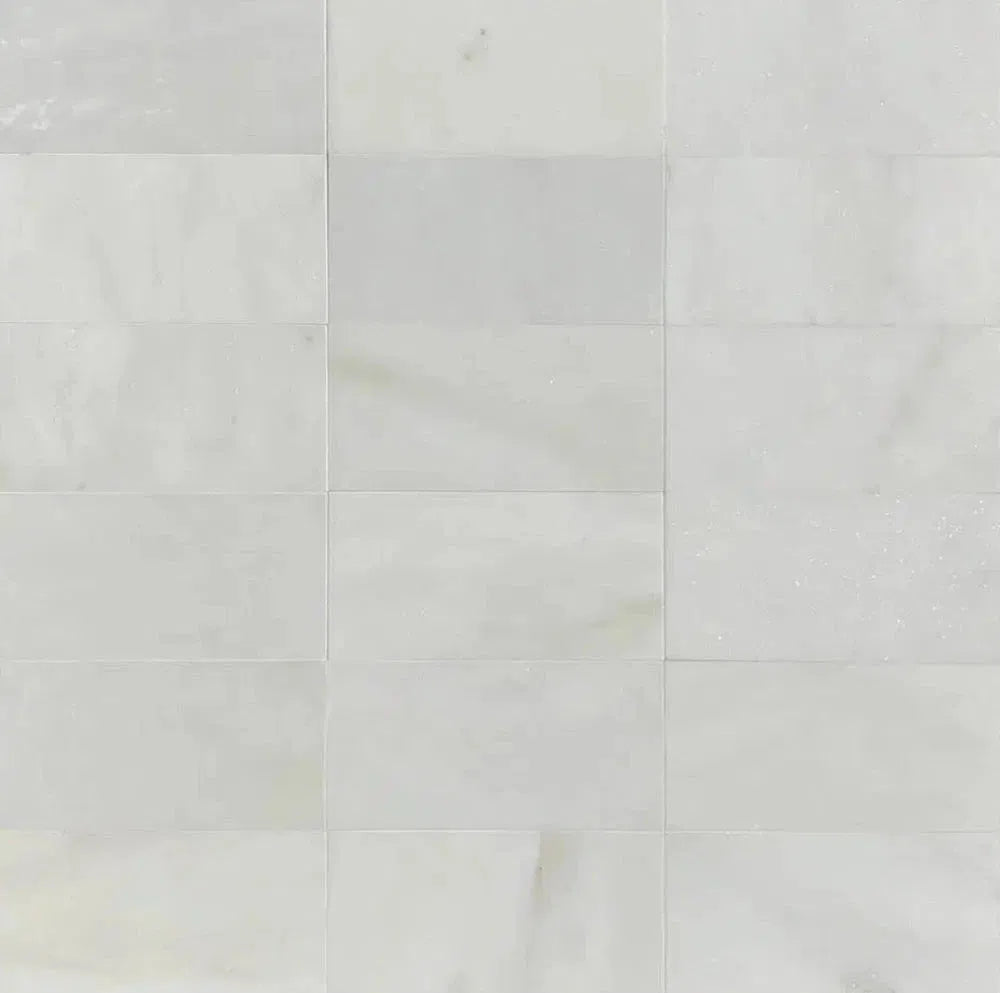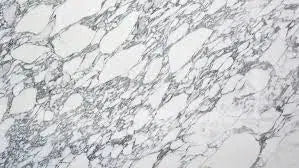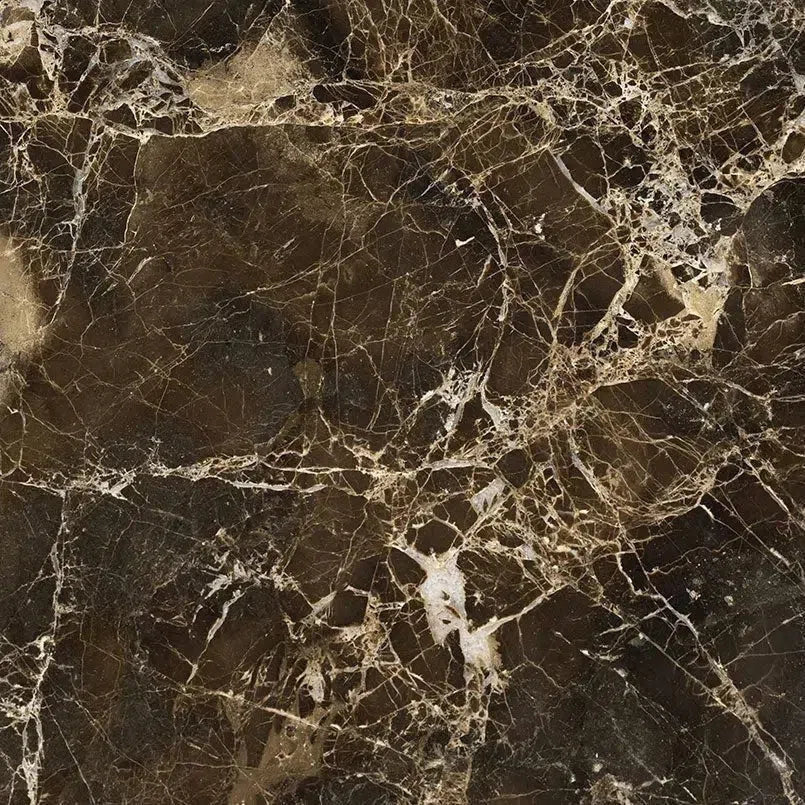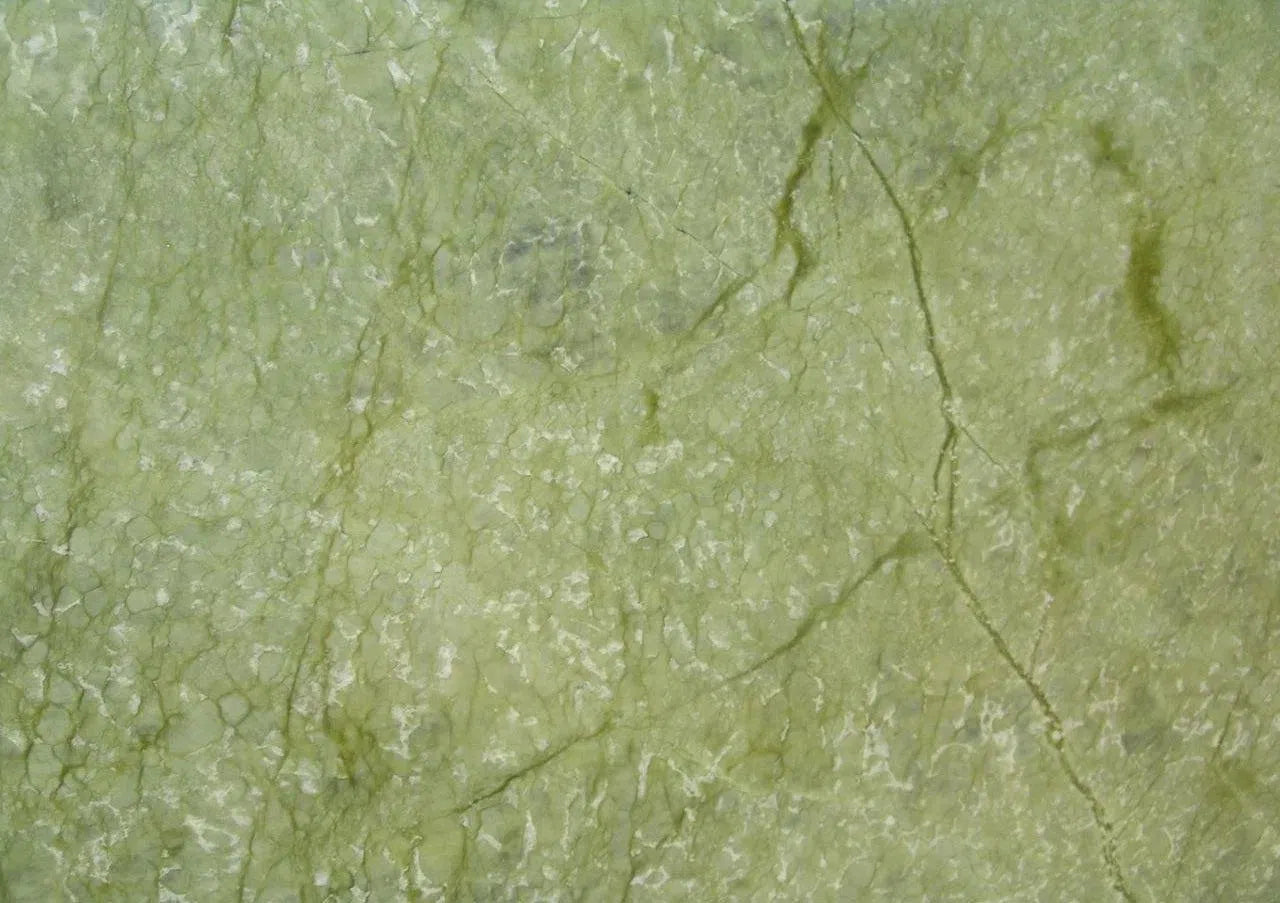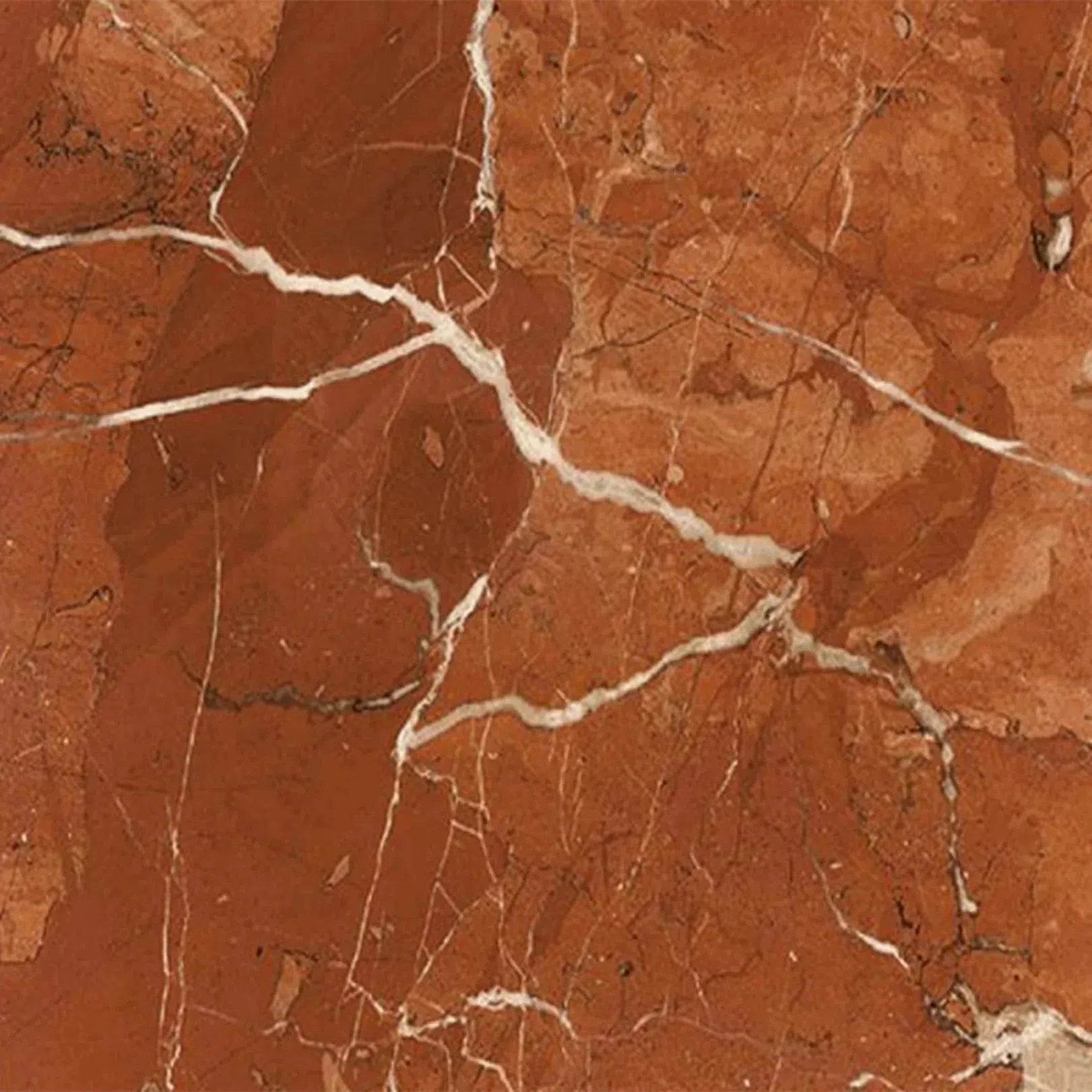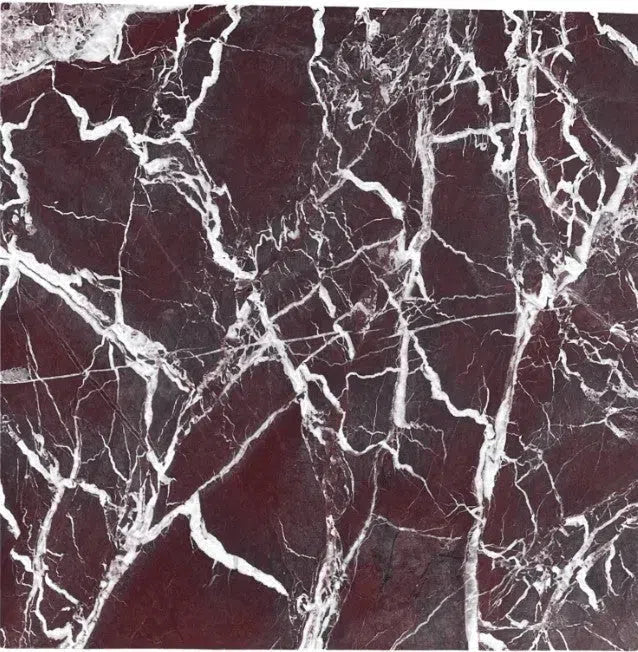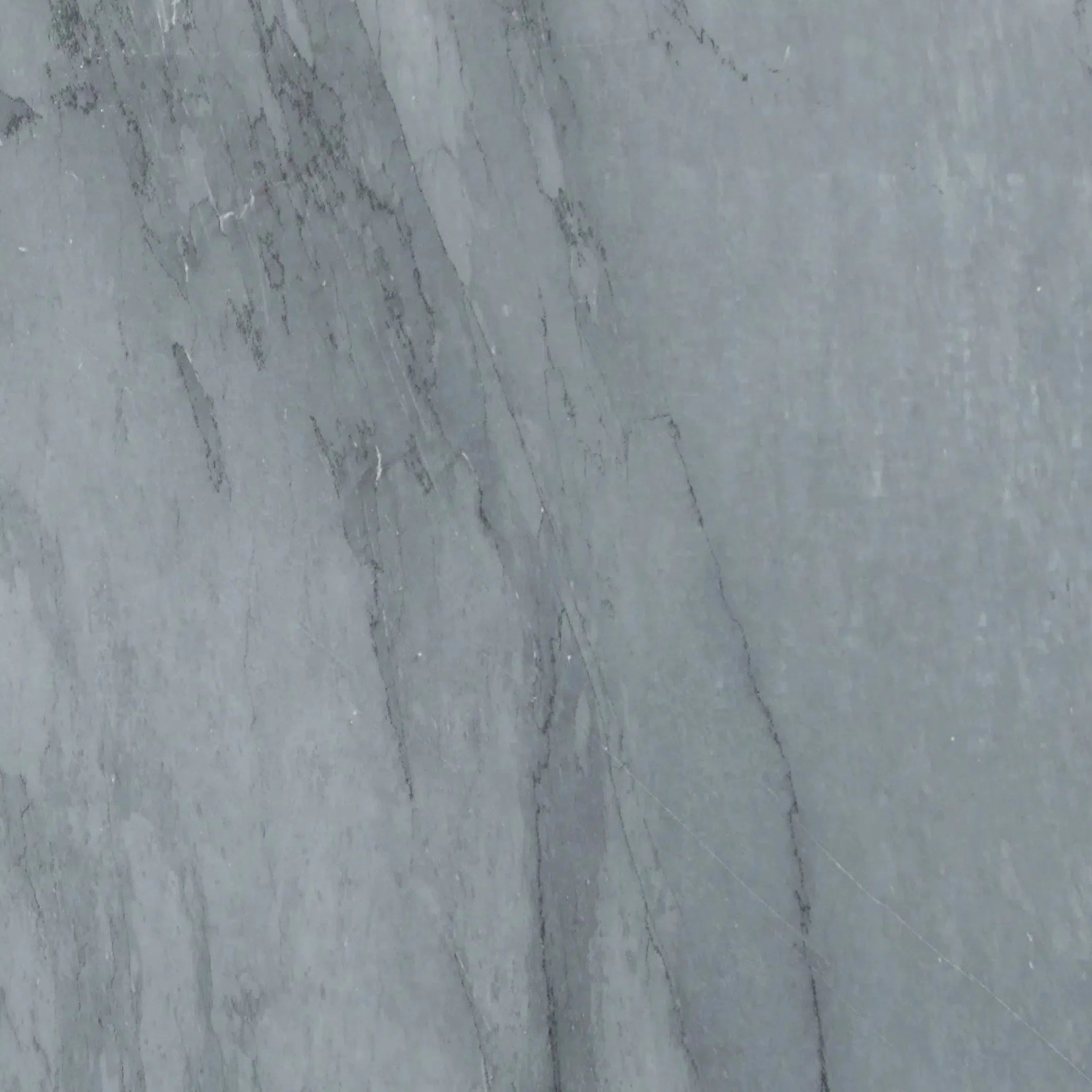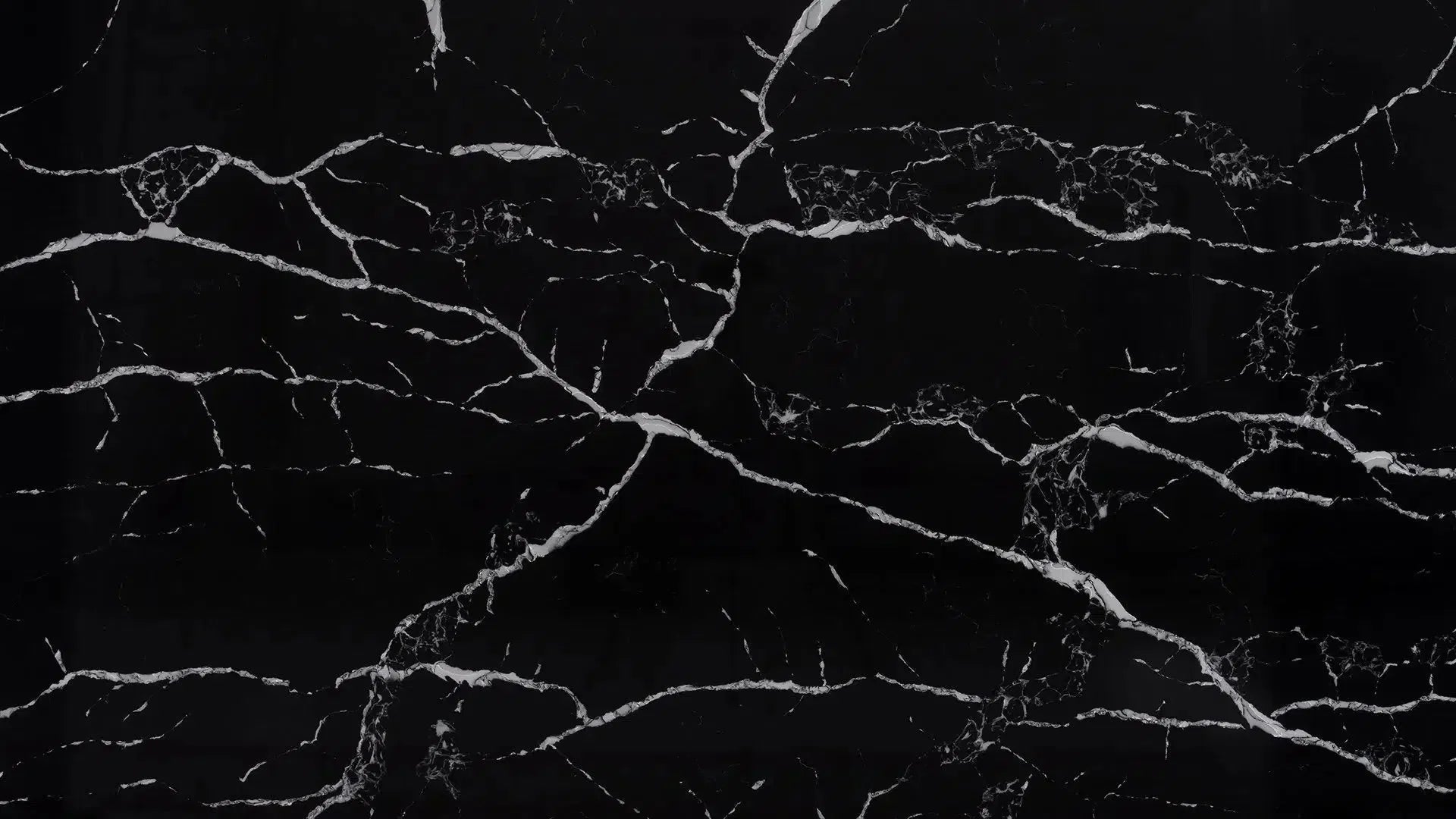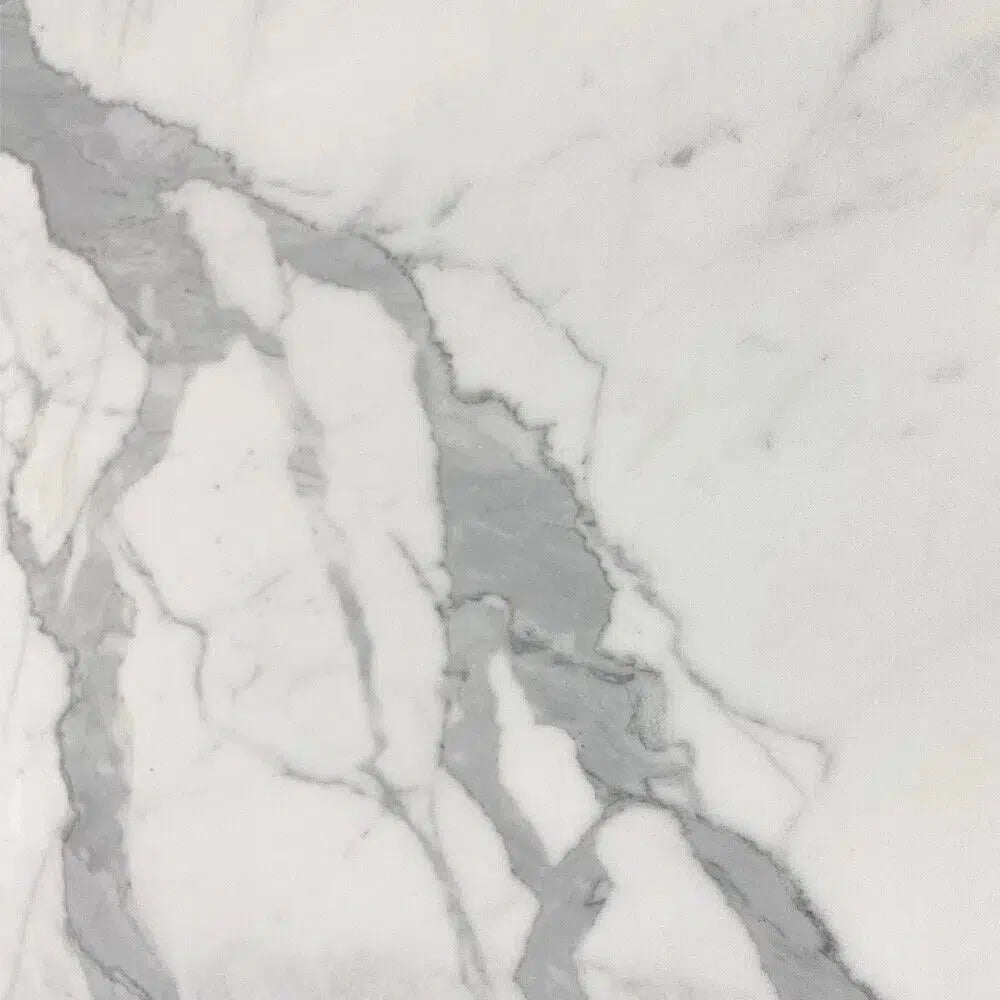So, you're looking to get that fancy marble look without all the fuss and expense? Yeah, me too. It's like, marble is gorgeous, right? Those veins just scream luxury. But then you think about the upkeep, the cost, and maybe your wallet starts to cry a little. Thankfully, there's a pretty neat solution out there: quartz that looks like marble. It gives you the visual appeal of natural stone but with a lot more practical benefits. Let's break down what you need to know if you're considering this for your home.
Key Takeaways
- Quartz that looks like marble offers the visual appeal of natural stone with added practical benefits.
- It bridges the gap between the beauty of marble and the durability of engineered stone.
- Choosing marble-look quartz means opting for a low-maintenance surface compared to natural marble.
- There are many styles available, from Calacatta and Carrara inspirations to unique veining patterns.
- Premium versions boast authentic veining, realistic textures, and are non-porous and stain-resistant.
- This material is versatile and can be used for countertops, vanities, backsplashes, and even accent walls.
- Proper installation is key to achieving a seamless and beautiful finish.
- Caring for marble-look quartz is straightforward, typically involving simple cleaning methods.
Understanding Quartz That Looks Like Marble
Marble has always been a symbol of luxury and timeless beauty in home design. Its natural veining and elegant appearance have graced some of the most iconic spaces. However, natural marble comes with its own set of challenges, like porosity, susceptibility to stains, and the need for regular sealing. This is where quartz that mimics marble steps in, offering a fantastic alternative for homeowners across the U.S. looking for that sophisticated marble aesthetic without the upkeep.
The Allure of Marble Veining
Marble's signature look comes from its unique veining – those beautiful, often dramatic lines that run through the stone. These veins are formed by mineral impurities and natural fissures within the marble, making each slab truly one-of-a-kind. The appeal lies in this natural artistry, creating a dynamic and visually interesting surface that can become a stunning focal point in any room. Whether it's the bold, sweeping patterns of Calacatta or the softer, more subtle lines of Carrara, marble veining adds a layer of depth and character that's hard to replicate.
The Durability of Quartz
Quartz, as a material, is known for its incredible strength and resilience. It's an engineered stone, meaning it's manufactured by combining natural quartz crystals with resins and pigments. This process results in a surface that is exceptionally hard, non-porous, and resistant to scratches, stains, and heat. Unlike natural stone, quartz doesn't require sealing, making it a very low-maintenance option for busy households. This inherent durability makes it a practical choice for high-traffic areas like kitchens and bathrooms.
Bridging the Gap: Engineered Beauty
Quartz that looks like marble is the result of advanced manufacturing techniques. Designers and engineers have become incredibly skilled at replicating the natural beauty of marble using engineered quartz. They carefully select pigments and resins to mimic the color and veining patterns found in natural marble. This engineered beauty allows you to enjoy the luxurious look of marble with the practical benefits of quartz. It’s the best of both worlds, providing a surface that is as functional as it is beautiful.
Why Choose Quartz Over Natural Marble
When comparing quartz to natural marble, several factors stand out. Quartz is significantly more durable and less prone to staining or etching, which are common concerns with marble. Its non-porous nature means it doesn't harbor bacteria and is easier to keep clean. Furthermore, quartz offers consistency in color and pattern, unlike natural marble where variations can be significant from slab to slab. For many homeowners, especially those with active families or commercial projects, the low maintenance and high durability of quartz make it the more sensible choice.
Identifying High-Quality Marble-Look Quartz
Not all marble-look quartz is created equal. When selecting a high-quality product, pay close attention to the realism of the veining. Look for patterns that mimic natural marble's flow and variation, avoiding designs that appear too repetitive or artificial. The surface texture should also feel authentic, and the overall finish should be consistent. Reputable manufacturers use advanced digital printing and sophisticated techniques to achieve a look that is remarkably close to natural stone. Always ask about the manufacturer's warranty and look for brands known for their quality.
The Appeal of Low Maintenance Surfaces
In today's fast-paced world, surfaces that require minimal upkeep are highly desirable. Marble-look quartz fits this bill perfectly. Its non-porous surface means spills like wine, coffee, or oil won't penetrate and cause stains. Cleaning is typically as simple as wiping with soap and water. This lack of required sealing and the resistance to common household chemicals make it an incredibly practical choice for kitchens, bathrooms, and other areas where spills and messes are common. It offers peace of mind for homeowners who want beauty without the constant worry.
Achieving Timeless Elegance Affordably
Natural marble can be quite expensive, both in terms of material cost and installation. Marble-look quartz provides a way to achieve that same timeless elegance at a more accessible price point. You get the sophisticated aesthetic that marble is known for, but with a more budget-friendly option. This makes luxurious design achievable for a wider range of projects and homeowners across the country. It’s a smart way to invest in your home’s appearance without compromising on quality or durability.
Exploring Marble-Inspired Quartz Collections
When you're aiming for that classic marble look without the upkeep, engineered quartz is a fantastic choice. It gives you the visual appeal of natural stone but with a much more practical nature. There's a whole world of marble-inspired quartz out there, and it's exciting to see how designers are using it.
Discovering Calacatta-Style Quartz
Calacatta marble is known for its dramatic, bold veining against a bright white background. Quartz collections often replicate this look, offering striking patterns that can really make a statement in a kitchen or bathroom. These slabs bring a sense of luxury and grandeur, mimicking the high-end feel of real Calacatta.
Embracing Carrara-Inspired Designs
Carrara marble, on the other hand, features softer, more subtle grey veining on a white or off-white base. Quartz manufacturers capture this gentler aesthetic, providing designs that are elegant and understated. If you prefer a more subdued elegance, Carrara-style quartz is a wonderful option for creating a serene atmosphere.
Finding Statuario-Like Quartz Patterns
Statuario marble is another prized Italian stone, often characterized by its pure white base and striking, sometimes dramatic, grey veining. Quartz versions aim to capture this purity and visual impact. These patterns can add a sophisticated touch to any space, offering a clean yet distinctive look.
Exploring Unique Veining Variations
Beyond the classic Italian marbles, quartz collections offer a wide array of veining styles. You'll find everything from fine, delicate lines to thick, sweeping strokes, and even intricate, web-like patterns. Some designs incorporate subtle color variations within the veins, adding depth and realism. This variety means you can find a unique pattern that perfectly suits your personal style.
Selecting the Perfect White Marble Look
White marble-look quartz is incredibly popular, and for good reason. It brightens spaces and offers a timeless appeal. When choosing, pay attention to the undertones of the white – is it a cool, crisp white, or a warmer, creamy hue? The veining's color and density also play a big role in the overall impression.
Considering Subtle Grey Marble Tones
For those who love the marble aesthetic but want something less stark than pure white, grey marble-look quartz is a great alternative. These designs often feature soft grey backgrounds with white or darker grey veining, or vice versa. They offer a sophisticated, modern feel that pairs well with a variety of cabinet colors and decor styles.
The Spectrum of Marble-Look Quartz Colors
While white and grey are dominant, marble-look quartz also comes in a surprising range of other colors. You can find quartz that mimics the warmer tones of crema marfil, the deep hues of nero marquina, or even exotic marbles with hints of green, gold, or blush. This broad spectrum allows for incredible design flexibility across many different projects.
The sheer variety in marble-look quartz means you can achieve almost any aesthetic you desire, from classic luxury to modern chic. It's a smart way to get the beauty of natural stone with the practical benefits of engineered surfaces. If you're looking for durable and beautiful countertops, exploring these collections is a must. You can find excellent options for kitchen countertops nationwide.
Key Features of Premium Marble-Look Quartz
When you're looking for that perfect marble aesthetic without the fuss, high-quality marble-look quartz is the way to go. It really brings together the best of both worlds. Let's talk about what makes the premium stuff stand out.
Authentic Veining Patterns
This is where the magic happens. The best marble-look quartz doesn't just have random squiggles; it mimics the natural flow and variation you see in real marble. Think about those dramatic, sweeping veins in Calacatta or the softer, more subtle ones in Carrara. The top-tier quartz brands spend a lot of time and effort getting these patterns just right, often using advanced digital printing to make them look incredibly lifelike. You'll see variations in thickness and color within the veins, just like nature intended.
Realistic Surface Texture
It's not just about the pattern; it's about how it feels. Premium quartz often incorporates subtle textures that mimic the natural feel of stone. Some might have a slight unevenness, while others aim for a smooth, cool touch. This attention to detail makes a big difference in how authentic the surface appears and feels under your fingertips.
Exceptional Durability and Strength
Quartz itself is naturally very hard, ranking 7 on the Mohs scale. When it's engineered into countertops, this inherent strength is maintained. This means your marble-look surface can handle the daily grind of a busy kitchen or bathroom without much worry. It's built to last.
Non-Porous and Stain-Resistant Qualities
This is a huge selling point. Unlike natural marble, which is porous and can stain easily, quartz is engineered to be non-porous. This makes it incredibly resistant to common household spills like wine, coffee, or oil. Cleanup is usually a breeze – just a quick wipe-down is often all that's needed.
Heat and Scratch Resistance
While it's not completely invincible, good quality quartz offers solid resistance to both heat and scratches. You can generally place a hot pan on it for a short time, though using a trivet is always a good idea. Similarly, everyday scratches from knives or keys are less likely to leave a mark compared to softer materials.
Consistent Color and Pattern
One of the benefits of engineered stone is its consistency. While natural marble slabs can vary significantly from one to the next, quartz offers a predictable and uniform look. This is great if you're planning a large project and need multiple slabs to match perfectly. You know what you're getting.
Low Maintenance Requirements
Forget about regular sealing or special cleaning products. Marble-look quartz is designed for easy care. Daily cleaning typically involves mild soap and water. This low-maintenance aspect is a major draw for homeowners who want the beauty of marble without the demanding upkeep. It's a practical choice for modern living.
Designing with Quartz That Mimics Marble
Quartz that looks like marble offers a fantastic way to get that high-end marble look without all the fuss. It's a smart choice for many areas in your home, blending beauty with practicality. Let's look at how you can use it.
Kitchen Countertop Applications
Quartz countertops mimicking marble are a popular choice for kitchens. They give you the visual appeal of natural marble, with its beautiful veining, but are much easier to care for. This makes them ideal for busy kitchens where spills and stains are common. You can get that classic Calacatta or Carrara look that brightens up the space and makes it feel more luxurious. They hold up well against daily use, resisting heat and scratches better than many natural stones.
Bathroom Vanity Tops
In bathrooms, marble-look quartz is a dream. Think about a vanity top that looks like fine marble but doesn't stain easily from makeup or toiletries. It’s perfect for powder rooms and master bathrooms alike. The non-porous surface means it’s hygienic and simple to clean, which is a big plus in a humid bathroom environment. You can find patterns that range from subtle, soft veining to more dramatic, bold streaks, fitting any bathroom style.
Shower Walls and Surrounds
Using marble-look quartz in shower areas brings a spa-like feel to your bathroom. Unlike natural marble, which can be porous and prone to water damage if not sealed properly, quartz is inherently resistant to moisture. This means fewer worries about mold or mildew. Large format slabs can be used to minimize grout lines, creating a smooth, continuous surface that looks incredibly elegant and is easy to maintain.
Backsplash Elegance
A backsplash is a great place to add a touch of marble-inspired style. Whether you choose a simple quartz slab or a more intricate tile pattern, it can tie your kitchen or bathroom design together. A quartz backsplash offers durability and easy cleaning, protecting your walls from splashes and grease. It’s a practical way to incorporate the luxurious look of marble into your design without covering large surfaces.
Flooring Options
While less common than countertops or walls, marble-look quartz tiles can be used for flooring, especially in areas that need a durable and stylish surface. They offer the beauty of marble flooring with the added benefits of quartz's scratch and stain resistance. This can be a great option for entryways or high-traffic areas where you want a sophisticated look that can withstand daily wear and tear.
Accent Walls and Features
Beyond traditional surfaces, marble-look quartz can be used for accent walls, fireplace surrounds, or even custom furniture pieces. Imagine a stunning fireplace with a quartz surround that mimics the grandeur of natural marble. It adds a unique architectural element to a room, creating a focal point that is both beautiful and incredibly durable. This is where you can really get creative with the material.
Integrating with Cabinetry Styles
Marble-look quartz pairs well with a wide range of cabinetry styles. For a classic look, combine it with white or cream cabinets. If you prefer a more modern aesthetic, dark grey or black cabinets can create a striking contrast. Even natural wood cabinets can complement the veining patterns, offering a warm and inviting feel. The versatility of marble-look quartz allows it to adapt to almost any design vision.
When selecting marble-look quartz, consider the overall color palette and style of your room. Think about how the veining pattern will interact with other elements in the space. A bolder vein might be a statement piece, while a subtler pattern can offer a more understated elegance.
The Manufacturing Process Behind the Illusion
Ever wonder how quartz surfaces get that stunning marble look without the fuss? It’s all thanks to some clever engineering and a bit of artistry. The magic happens in a controlled environment, combining natural quartz with binders and pigments to create a slab that’s both beautiful and incredibly practical.
The Role of Quartz Crystals
At its core, engineered quartz is made from natural quartz. We're talking about crushed quartz, usually around 90-95% of the final product. This natural mineral is what gives the material its strength and hardness. Think of it as the foundation for everything else.
Incorporating Pigments for Color
To get those classic white, grey, or even black bases you see in marble-look quartz, manufacturers add pigments during the mixing process. These aren't just slapped in randomly; they're carefully measured to achieve specific, consistent shades. This is a big part of why your countertop color won't vary from one slab to another, unlike natural stone.
Creating Realistic Veining Effects
This is where the illusion really comes to life. Manufacturers use a few different techniques to mimic the natural veining of marble. Sometimes, it's done by adding colored resins or slurries during the manufacturing process, creating patterns that flow through the slab. Other times, advanced digital printing technology is used to apply incredibly realistic vein patterns onto the surface. The goal is to replicate the organic, unpredictable beauty of natural marble.
The Importance of Resin Binders
Those quartz crystals and pigments need something to hold them all together. That's where polymer resins come in. These binders not only fuse the quartz particles but also fill in any tiny gaps, making the final product non-porous. This is a key difference from natural marble, which is porous and needs sealing. The resin is what makes your engineered quartz countertops so resistant to stains and moisture.
Advanced Digital Printing Techniques
For the most intricate and realistic veining, many manufacturers now use high-definition digital printing. This technology allows for incredibly detailed patterns, mimicking everything from subtle hairline veins to dramatic, sweeping movements found in high-end marble. It’s a sophisticated process that adds a layer of authenticity to the engineered stone.
Ensuring Surface Uniformity
Once the mixture is ready, it's poured into molds and then put through a process of vibration, vacuum, and compression. This step is vital for removing air pockets and creating a dense, uniform slab. This uniformity is what makes the material so strong and consistent across its entire surface.
Quality Control in Production
Before any slab leaves the factory, it goes through rigorous quality checks. Inspectors look for any inconsistencies in color, pattern, or surface texture. They check for structural integrity and ensure the slab meets the high standards expected for a premium product. This attention to detail is what separates a good marble-look quartz from a truly exceptional one.
Caring for Your Marble-Look Quartz Surfaces
So, you've picked out that gorgeous quartz that looks just like marble. Awesome choice! Now, keeping it looking its best is pretty straightforward, honestly. It's one of the big perks of going with quartz over the real deal.
Daily Cleaning Routines
For everyday messes, a simple wipe-down is usually all you need. Grab a soft cloth, maybe slightly damp, and just go over the surface. If you've got a bit of a sticky spot or a minor spill, a little bit of mild dish soap mixed with warm water works wonders. Just wipe it clean and then dry it off with another soft cloth so you don't get water spots. It’s really that easy for daily upkeep.
Tackling Spills and Stains
Accidents happen, right? If something spills, especially something like wine, coffee, or oil, try to wipe it up sooner rather than later. Quartz is non-porous, which is a huge plus, meaning most things won't soak in and cause a permanent stain. For tougher spots, a non-abrasive cleaner is your friend. You can even use a glass cleaner or a bit of rubbing alcohol on a cloth for stubborn marks. A quick spray and wipe usually does the trick.
Avoiding Harsh Chemicals
This is a big one. While quartz is tough, you want to avoid really harsh stuff. Things like oven cleaners, drain cleaners, or anything with high levels of lye or bleach can potentially dull the finish over time. Also, steer clear of abrasive scrubbers or steel wool pads, as they can scratch the surface. Stick to gentle, everyday cleaners, and your quartz will thank you.
Protecting Against Extreme Heat
Even though quartz is heat-resistant, it's not completely heat-proof. You know, like putting a scorching hot pan directly from the stove onto the surface? That's a no-go. It can cause thermal shock, which might lead to discoloration or even cracks. Always use trivets or hot pads for hot pots and pans. It’s a small step that saves a lot of potential headaches.
Preventing Scratches and Chips
Quartz is super hard, but it's not indestructible. To keep it looking pristine, avoid dragging heavy pots, pans, or appliances across the surface. Using a cutting board is also a good idea if you're doing a lot of chopping. While it's scratch-resistant, deep gouges can still happen if you're not careful. Think of it like any nice surface in your home – a little care goes a long way.
Long-Term Surface Maintenance
Honestly, the long-term care for marble-look quartz is minimal. Because it's non-porous, you don't have to worry about sealing it like natural stone. Just keep up with the regular cleaning, and you're pretty much set. It’s designed to be low-maintenance, which is why so many people choose it for busy kitchens and bathrooms. You get that luxury natural stone look without all the demanding upkeep.
Restoring Shine and Vibrancy
Over time, if the surface starts to look a little less vibrant, it's usually just a buildup of residue from cleaners or everyday use. A good cleaning with a pH-neutral cleaner or even a mixture of water and a little white vinegar can help strip away that buildup. After cleaning, make sure to rinse thoroughly with clean water and buff it dry with a soft cloth. This should bring back that beautiful shine and make your quartz look almost new again.
Comparing Quartz to Natural Marble
When you're looking to get that classic marble look in your home, you've got a couple of main paths: natural marble itself, or engineered quartz designed to mimic it. Both have their fans, but they really are quite different beasts. Let's break down what sets them apart so you can make the best choice for your project.
Porosity and Sealing Needs
Natural marble is a porous stone. This means it has tiny little holes that can soak up liquids. Because of this, marble countertops need to be sealed regularly, usually once or twice a year, to prevent stains from setting in. If you skip the sealing, spills like red wine, coffee, or even just water can leave a mark. Quartz, on the other hand, is non-porous. It's engineered with resins that fill in any potential gaps, making it completely resistant to liquids. This means no sealing is required, ever. It's a big difference if you're thinking about a busy kitchen.
Stain and Etch Resistance
This is where the non-porous nature of quartz really shines. Because it doesn't absorb liquids, it's highly resistant to staining. Even things like oil or juice usually wipe right off without a trace. Marble, being softer and more porous, is susceptible to etching. Acids, like lemon juice, vinegar, or even some cleaning products, can react with the calcium carbonate in the stone, leaving dull spots or marks that are hard to remove. Quartz doesn't have this problem; it stands up much better to everyday kitchen mishaps.
Maintenance and Upkeep
If low maintenance is high on your list, quartz is the clear winner. A simple wipe-down with soap and water is usually all that's needed for daily cleaning. You don't have to worry about special cleaners or frequent sealing. Natural marble requires more attention. You'll need to be careful about what you use to clean it, avoiding anything acidic or abrasive, and remember that regular sealing is a must. It's a commitment that some homeowners love, but others find a bit much for a high-traffic area.
Durability and Longevity
Both materials can last a very long time, but they achieve this durability in different ways. Quartz is incredibly hard and dense, making it resistant to chips and scratches. It's engineered for strength. Natural marble is also durable, but it's softer than quartz. While it can withstand heavy use, it's more prone to chipping or scratching if something heavy is dropped on it or if abrasive materials are dragged across the surface. However, many people appreciate the patina that natural marble develops over time, seeing it as a sign of its history and character.
Cost Considerations
Generally, natural marble can be more expensive than quartz, especially for rarer types or those with particularly striking veining. The cost of installation can also be higher due to the weight and fragility of the stone, and you have to factor in the ongoing cost of sealants and potentially professional cleaning. Quartz prices can vary widely depending on the brand and the complexity of the design, but it often presents a more budget-friendly option, especially when you consider the lack of ongoing maintenance costs. For many, the long-term value proposition of quartz makes it a smart investment.
Consistency in Appearance
One of the biggest differences is consistency. Quartz is an engineered product, so manufacturers can control the color and pattern precisely. If you choose a specific marble look, you can be confident that the slab you get will look very similar to the sample or display you saw. Natural marble is a product of nature, meaning every slab is unique. The veining, color, and pattern will vary from one piece to another, even within the same quarry. This uniqueness is part of marble's charm for many, but if you're looking for a very specific, uniform look, quartz is the way to go.
Environmental Impact
When comparing the environmental impact, it's a bit of a mixed bag. Natural marble is quarried, which has its own environmental considerations. However, it's a natural material that doesn't involve synthetic binders or resins. Quartz countertops are engineered, meaning they are manufactured. This process uses natural quartz (often recycled) mixed with resins and pigments. The manufacturing process requires energy, but the resulting product is extremely durable and long-lasting, reducing the need for replacement over time. Some quartz manufacturers also focus on sustainable sourcing and production methods.
Selecting the Right Shade and Pattern
Choosing the perfect marble-look quartz involves more than just picking a pretty slab. It’s about finding a shade and pattern that truly fits your home’s style and the specific room you’re working with. Think of it like picking out a piece of art – it needs to complement its surroundings.
Matching Your Decor Style
Your home’s existing decor is the biggest clue. Is your style modern and minimalist? You might lean towards quartz with clean, subtle veining. If you have a more traditional or farmhouse vibe, bolder, more dramatic patterns could be the way to go. The goal is to create a cohesive look, not a jarring contrast. For those looking to stay current, exploring the latest quartz countertop color trends for 2025 can offer inspiration.
Considering Lighting Conditions
Light plays a huge role in how a surface looks. A shade that appears bright and airy in a showroom might look a bit dull in a room with less natural light. Conversely, a darker shade might feel too heavy in a very bright space. It’s a good idea to see samples in the actual room where they’ll be installed, at different times of the day.
The Impact of Vein Density
Veining can range from sparse and delicate to dense and dramatic. Sparse veins offer a more understated elegance, often mimicking high-end marble. Denser patterns can create a more dynamic, eye-catching surface. Consider the scale of your project; a busy pattern might be overwhelming on a small vanity but stunning on a large kitchen island.
Choosing Between Bold and Subtle Patterns
This comes down to personal preference and the desired impact. Bold patterns make a statement and can become a focal point of the room. Subtle patterns provide a sophisticated backdrop that allows other design elements to shine. Think about what you want the countertops to do in your space.
Visualizing the Slab in Your Space
Seeing a small sample is helpful, but it doesn’t always tell the whole story. Many suppliers offer larger slab views online, or you can visit a showroom. Some companies even have visualization tools that let you see the quartz in a sample kitchen or bathroom. It helps to get a feel for how the pattern repeats and flows across a larger area.
Ordering Samples for Comparison
Don't skip this step! Ordering samples allows you to compare different shades and patterns side-by-side in your home’s lighting. You can also test how they look next to your cabinets, flooring, and paint colors. It’s a small step that can prevent big regrets later on.
Consulting Design Professionals
If you’re still unsure, talking to a designer or an experienced salesperson can be incredibly beneficial. They can offer insights based on your specific project and help you understand how different Wilsonart Quartz designs might work in your space. They’ve seen a lot and can guide you toward choices that are both beautiful and practical.
The Advantages of Direct Sourcing

When you're looking for that perfect marble-look quartz for your home project, where you buy it from really matters. Going straight to the source, or working with suppliers who do, can make a big difference. It’s not just about getting a good price, though that’s definitely a perk. It’s about knowing you’re getting the real deal, high-quality material without any middleman markups.
Ensuring Authentic Material Quality
Working with direct sources means you're more likely to get top-tier materials. Think of it like buying directly from a farmer's market versus a big supermarket. You get the freshest, best-quality produce. For quartz, this translates to slabs with the most realistic veining, consistent color, and superior durability. We focus on handpicked A+ quality materials, steering clear of anything less than premium. You won't find commercial-grade stuff here; it's all about the best for your U.S. home project.
Access to Premium Selections
Direct importers often have access to a wider and more exclusive range of patterns and colors. They build relationships with quarries worldwide, giving them the first pick of the latest designs and unique marble looks. This means you get to choose from collections that aren't widely available everywhere else, helping your kitchen or bathroom stand out.
Competitive Pricing Benefits
Cutting out the middlemen means fewer hands touching the product and fewer markups along the way. This direct importer advantage often translates into more competitive pricing for you. You get that luxurious marble look without the hefty price tag, making beautiful design more accessible for nationwide projects.
Consistent Supply Chain
When a supplier sources directly, they often have a more stable and predictable supply chain. This is good news for your project timeline. You're less likely to face delays because your supplier has a direct line to the material, whether it's for a small bathroom vanity or a large kitchen countertop.
Direct Importer Value
Being a direct importer isn't just a label; it means a commitment to quality and value. It signifies a hands-on approach to sourcing, where the supplier personally vets the materials. This direct involvement helps guarantee that the quartz you receive meets high standards for appearance and performance.
Trustworthy Material Origins
Knowing where your quartz comes from builds confidence. Direct sourcing allows suppliers to trace the material back to its origin, providing transparency about its quality and manufacturing process. This trust is key when investing in a significant home renovation.
Expert Guidance on Stone Choices
Suppliers who work directly with quarries often have a deep knowledge of the materials they offer. They can provide informed advice on the best marble-look quartz for your specific needs, helping you choose the right pattern, color, and finish to achieve your desired aesthetic for any U.S. project.
Installation Considerations for Marble-Look Quartz
So, you've picked out that gorgeous marble-look quartz for your kitchen or bathroom. Awesome choice! But before you start picturing it in your space, let's talk about getting it installed. It's not quite a DIY job for most people, and getting it right makes a big difference in how it looks and lasts.
Professional Installation Expertise
Seriously, don't try to cut and fit these slabs yourself unless you've done this a million times. Professional installers have the right tools and know-how to handle heavy quartz slabs without damaging them or your home. They understand how to measure precisely, cut accurately, and fit everything perfectly. It's worth the peace of mind to hire someone who does this for a living. They know how to work with engineered stone, which is different from natural stone in some ways.
Proper Seam Placement
This is a big one for that marble look. You want the seams to be as invisible as possible, right? Good installers know where to place seams to minimize their appearance, especially when dealing with intricate veining patterns. They'll try to match the patterns across the seams so it looks like one continuous piece. It takes a keen eye and a steady hand. You can explore different quartz countertops that mimic marble to see how seams can be managed.
Edge Profile Options
The edge of your countertop isn't just a detail; it frames the whole look. You've got choices here, from simple and clean straight edges to more decorative ones like bullnose or ogee. The profile you pick can change the overall style of your space. A simple eased edge is great for a modern look, while a more detailed edge might suit a traditional kitchen. Talk to your installer about what works best with your chosen marble-look quartz and your cabinet style.
Ensuring Level Surfaces
This might sound obvious, but making sure your cabinets are perfectly level before installation is key. If they aren't, the quartz won't sit right, and you could end up with uneven surfaces or gaps. Installers will check this and often shim where needed to get it just right. A level countertop isn't just about looks; it's about function too. You don't want your coffee maker sliding off!
Integration with Plumbing and Appliances
This is where things get technical. Installers need to make sure cutouts for sinks, faucets, and cooktops are precise. They'll also need to coordinate with plumbers and electricians if necessary. Getting these cutouts right the first time saves a lot of headaches later. They know the clearances needed for different fixtures and appliances to work properly and look good.
Handling Large Slabs
Quartz slabs are heavy and can be awkward to maneuver, especially in tight spaces or up staircases. Professional installers have the equipment and the teamwork to get these large pieces into your home safely without scratching walls or the slabs themselves. It's a job that requires planning and careful execution.
Post-Installation Checks
Once everything is in place, the installer should do a final walkthrough with you. They'll check that everything is secure, level, and that you're happy with the finished look. This is your chance to point out any little things that might need a tweak. It's the last step to making sure your beautiful new countertop is perfect.
The Aesthetic Appeal of Marble-Inspired Quartz
Marble has always been a symbol of luxury and timeless beauty in home design. Think of grand entryways, elegant kitchens, and spa-like bathrooms – marble often comes to mind. But what if you love that look but are worried about the upkeep or the cost? That's where marble-inspired quartz really shines. It brings that same high-end feel to your home without the headaches.
Creating a Luxurious Ambiance
Marble-look quartz can instantly make any room feel more sophisticated. The intricate veining, whether it's a dramatic Calacatta style or a softer Carrara pattern, adds depth and character. It’s a way to get that designer look without needing a designer budget. Imagine walking into a kitchen with countertops that look like they belong in a magazine – that's the power of this material. It sets a tone of quality and elegance that guests will notice.
Enhancing Kitchen Aesthetics
In the kitchen, marble-inspired quartz is a game-changer. It works beautifully as countertops, providing a durable and attractive surface for meal prep. The visual appeal of the veining can make a simple kitchen feel much more upscale. It pairs well with various cabinet styles, from modern minimalist designs to more traditional shaker cabinets. You can achieve a truly custom feel that reflects your personal style.
Elevating Bathroom Design
Bathrooms are another area where marble-look quartz truly excels. Vanity tops made from this material can transform a basic bathroom into a personal retreat. The non-porous nature of quartz means it's resistant to moisture and stains, which is a big plus in a bathroom environment. Think about a shower surround with subtle grey veining – it adds a spa-like tranquility that’s hard to beat. It’s a practical choice that doesn’t sacrifice beauty.
Adding Sophistication to Living Areas
Beyond kitchens and bathrooms, marble-inspired quartz can be used in living spaces too. Consider it for a fireplace surround, a stylish coffee table, or even as accent pieces. The material's ability to mimic natural stone means it can add a touch of natural elegance to any corner of your home. It’s a versatile material that can adapt to many different design visions.
Timeless Design Elements
One of the best things about marble-look quartz is its timeless appeal. Unlike trendy materials that can quickly go out of style, the classic beauty of marble patterns is enduring. This means your investment will look good for years to come. It’s a design choice that offers long-term satisfaction and can even add to your home's resale value. You're not just updating your space; you're investing in lasting style.
Achieving a High-End Look
Getting that high-end look is often the goal for many homeowners and designers. Marble-inspired quartz makes this achievable. The realistic veining and surface textures are so convincing that it’s hard to tell the difference from the real thing. This allows you to enjoy the prestige of marble without the associated maintenance concerns. It’s a smart way to get the luxury you desire for your U.S. projects.
Versatility in Design Applications
From sleek, modern kitchens to classic, traditional bathrooms, marble-look quartz fits right in. Its adaptability means it can be used in a wide range of applications. Whether you're looking for a bold statement piece or a subtle, understated elegance, there's a marble-inspired quartz pattern to match. This versatility makes it a go-to material for designers and homeowners alike who want a beautiful, practical surface.
Understanding Quartz Composition
When you're looking at quartz that mimics the look of marble, it's helpful to know what actually goes into making it. It's not just a slab of rock; it's a carefully engineered product. This material is primarily made from natural quartz crystals, which are then combined with other elements to create a durable and beautiful surface.
The Dominance of Quartz Crystals
The main ingredient in quartz countertops is, unsurprisingly, quartz. We're talking about natural quartz crystals, ground down into a fine powder or small pieces. These crystals make up about 90-95% of the final product. This high concentration of quartz is what gives the material its impressive hardness and strength. It’s a key reason why these surfaces are so resistant to scratches and chips, a big plus for busy kitchens and bathrooms across the U.S. projects.
The Role of Polymer Resins
To bind all those quartz crystals together and give the surface its solid form, manufacturers use polymer resins. These resins act like a glue, holding the quartz particles in place. They also contribute to the non-porous nature of the finished product. Because the resins fill in any tiny gaps, liquids can't easily seep in, which is why these countertops are so good at resisting stains. This is a significant difference compared to natural stone like marble, which often requires sealing.
Pigments for Color and Veining
To achieve that coveted marble look, pigments are mixed into the quartz and resin slurry. These pigments are what give the countertop its base color, whether it's a crisp white, a soft grey, or something else entirely. For the veining, which is so characteristic of marble, manufacturers use advanced techniques. Sometimes, pigments are added in a way that mimics natural patterns, or digital printing technology is employed to create incredibly realistic and varied vein effects. This allows for a consistent appearance that’s hard to find in natural stone.
The Manufacturing Process Overview
Creating these marble-look quartz surfaces involves a specific process. The quartz crystals and resins are mixed, often with pigments. This mixture is then poured into molds and subjected to intense vibration and vacuum processes. This gets rid of any air bubbles and compacts the material. After that, it's cured under heat and pressure. This combination creates a dense, hard, and uniform slab. The result is a material that offers the beauty of marble with the practical benefits of engineered stone.
Engineered Stone Properties
Because it's engineered, this material has properties that are often more predictable than natural stone. You get a consistent color and pattern throughout the slab, which makes planning your layout easier. It's also non-porous, meaning it won't absorb spills or harbor bacteria. This makes it a hygienic choice for kitchens and bathrooms. The engineered nature allows for a level of control over the final product's appearance and performance that natural stone simply can't match.
Achieving Density and Hardness
The combination of high quartz content and the binding resins, along with the manufacturing process, results in a very dense and hard material. On the Mohs scale of mineral hardness, quartz ranks a 7. This means your countertops will be quite resistant to scratching from everyday kitchen activities. Think about chopping vegetables or placing hot pans – while caution is always advised, this material holds up well. It’s a practical choice for homeowners looking for beauty without constant worry.
The Science of Surface Creation
Essentially, manufacturers are using the natural strength of quartz and combining it with modern technology to create a superior surface. The resins provide flexibility and stain resistance, while the quartz provides the hardness. Pigments and advanced printing techniques bring the aesthetic appeal. It’s a smart blend of nature and science, resulting in a product that’s both beautiful and built to last. If you're considering new countertops, understanding this composition helps appreciate why quartz countertops are such a popular choice for modern homes.
Finding Reliable Suppliers for Quartz That Looks Like Marble
So, you've decided on that gorgeous marble-look quartz for your home project. Awesome choice! It's got that high-end vibe without the high-maintenance headache. But now comes the next big step: finding a supplier you can actually trust. It’s not just about picking the prettiest slab; it’s about getting quality material that will last and a smooth buying experience. Let's talk about how to find the right people to get your stone from.
Importance of Reputable Dealers
When you're looking for marble-look quartz, sticking with well-known and respected dealers is a smart move. These companies usually have a good reputation for a reason. They tend to offer better quality products, stand behind their sales with warranties, and provide helpful customer service if something goes wrong. Think of it like buying a car – you’d rather go to a dealership with good reviews than a shady lot, right? The same applies here. A reputable dealer means less stress for you.
Evaluating Product Warranties
Don't skip this part! A solid warranty is a big sign that a supplier believes in their product. For quartz, you'll want to see what the warranty covers – things like manufacturing defects, staining, and chipping. Some warranties are for 10 years, others for 25, and some even offer lifetime coverage. Always read the fine print to understand what’s included and what’s not. A good warranty gives you peace of mind, knowing that if something unexpected happens, you’re covered.
Checking Customer Reviews and Testimonials
What are other people saying? Online reviews and testimonials are goldmines of information. Look for feedback on the quality of the quartz, the accuracy of the product descriptions, the shipping process, and how the company handles issues. If you see a pattern of complaints about damaged goods or poor customer service, it’s probably best to look elsewhere. Real customer experiences can tell you a lot about a supplier's reliability.
The Value of Showroom Visits
While online shopping is convenient, nothing beats seeing the material in person. If a supplier has a physical showroom, try to visit it. This lets you:
- See the true color and veining patterns up close.
- Feel the texture of the surface.
- Get a better sense of the slab's overall quality.
- Ask questions directly to sales staff.
Seeing the quartz in person helps you avoid surprises when it arrives at your home. It’s a chance to really connect with the material before you commit.
Understanding Material Certifications
Some quartz manufacturers and suppliers might have certifications that speak to the quality and safety of their products. While not always common for all marble-look quartz, certifications can indicate that the material meets certain industry standards. If you see certifications related to durability, non-toxicity, or environmental responsibility, it’s another positive sign about the supplier and the product they offer.
Comparing Pricing Structures
Price is definitely a factor, but it shouldn't be the only one. When comparing suppliers, look beyond just the per-square-foot cost. Consider what's included: delivery fees, fabrication costs (if applicable), and any other hidden charges. Some suppliers might seem cheaper upfront, but end up costing more once everything is added in. A transparent pricing structure is key.
Seeking Expert Recommendations
Don't be afraid to ask for advice! If you're working with a designer, architect, or contractor, they often have go-to suppliers they trust. They know which companies provide consistent quality and good service. Word-of-mouth recommendations from professionals in the field can be incredibly helpful in pointing you toward reliable sources for your marble-look quartz.
Finding the right supplier is about more than just the price tag. It's about building confidence in your purchase, knowing you're getting a quality product that will look great for years to come. Take your time, do your homework, and you'll find a supplier that makes your dream project a reality.
Budgeting for Marble-Look Quartz Projects
Thinking about getting quartz that looks like marble for your home? It’s a fantastic choice for adding that high-end marble look without all the fuss. But before you fall in love with a particular slab, let's talk about the numbers. Understanding the costs involved will help you plan your project smoothly and avoid any surprises down the road. It’s not just about the material itself; there are a few other things to consider.
Material Costs Explained
The price of marble-look quartz can vary quite a bit. You'll find that simpler patterns with less dramatic veining tend to be more budget-friendly. On the other hand, quartz that perfectly mimics rare marble types like Calacatta Gold, with intricate, flowing veins, will naturally cost more. The complexity of the veining and the overall design of the quartz are big factors in its price. Think about the slab size you need too; larger slabs might come with a higher price tag per square foot, but could potentially reduce the number of seams needed, which can be a cost saver in the long run.
Installation Expenses
Don't forget installation! This is a significant part of the total cost. Professional installation is key to getting that flawless finish. The installers will measure, cut, fabricate, and fit the quartz perfectly. Factors influencing installation costs include:
- The complexity of your layout (e.g., curves, cutouts for sinks).
- The thickness of the quartz slab.
- The distance the installers need to travel.
- The number of seams required.
It’s always a good idea to get detailed quotes from a few reputable installers to compare.
Edge Profile Choices and Pricing
The edge profile you choose for your countertops or vanities can also affect the price. Standard edges, like a simple eased or straight edge, are usually included in the base installation cost. However, more decorative profiles, such as a bullnose, ogee, or mitered edge, often come with an additional charge per linear foot. These details can really change the look of your finished surface, so weigh the aesthetic appeal against the extra cost.
Sink and Fixture Integration Costs
When you're budgeting, remember to factor in how your sink and other fixtures will be integrated. Will you be using an undermount sink, a drop-in sink, or a farmhouse sink? Undermount sinks, which create a clean line where the counter meets the sink, often require more precise fabrication and can add to the installation cost. Similarly, if you're planning for a special faucet or a unique backsplash, make sure these are included in your overall project budget.
Potential for Hidden Fees
Sometimes, unexpected costs can pop up. This might include charges for removing and disposing of old countertops, templating fees if they aren't included in the installation quote, or charges for any necessary modifications to your cabinetry to support the new countertops. Always ask your supplier and installer for a complete breakdown of all potential charges upfront.
Long-Term Value Proposition
While the initial cost of marble-look quartz is an important consideration, it's also worth thinking about the long-term value. Quartz is incredibly durable and low-maintenance. Unlike natural marble, it doesn't require regular sealing and is highly resistant to stains and etching. This means fewer repair costs and less hassle over the years. The timeless beauty of marble-look quartz also adds significant appeal and value to your home, making it a smart investment for many U.S. projects.
Maximizing Your Investment
To get the most out of your budget, consider these tips:
- Shop around: Compare prices from different suppliers and fabricators.
- Be flexible with design: Sometimes a slightly different pattern or shade can offer significant savings.
- Consider standard slab sizes: Custom sizes can sometimes incur extra cutting fees.
- Ask about package deals: Some companies offer discounts when you purchase both material and installation.
- Plan ahead: Avoid rush orders, which can sometimes come with premium pricing.
The Environmental Benefits of Quartz
Choosing quartz that looks like marble isn't just about aesthetics; it's also a smart move for the planet. When you opt for engineered stone, you're often making a more sustainable choice compared to other surfacing materials. Let's break down why.
Durability and Longevity
One of the biggest environmental pluses of quartz is how long it lasts. These surfaces are incredibly tough, resisting chips, cracks, and wear. This means they don't need to be replaced as often as softer materials. Think about it: fewer replacements mean less manufacturing, less transportation, and less waste ending up in landfills. It’s a simple concept, but it adds up.
Reduced Need for Replacement
Because quartz is so durable, you're not looking at frequent renovations. Natural marble, for instance, can be prone to etching and staining, sometimes requiring professional refinishing or even replacement over time. Quartz, with its engineered resilience, holds up much better to daily life. This longevity is a key factor in its environmental friendliness. You get a beautiful surface that stays beautiful for years, reducing the cycle of consumption.
Lower Maintenance Resource Use
Maintaining quartz surfaces is pretty straightforward. You don't need harsh chemicals or special sealants to keep them looking good. A simple wipe-down with soap and water usually does the trick. This means less water usage and fewer cleaning product chemicals being washed down the drain. Compared to natural stones that require regular sealing and specialized cleaners, quartz is a much lower-impact option in terms of ongoing resource use.
Recycled Content Possibilities
Many quartz manufacturers are incorporating recycled materials into their products. This can include recycled glass, mirrors, or other industrial byproducts. Using these materials reduces the demand for virgin resources and diverts waste from landfills. It’s a great way to give old materials new life in a beautiful, functional form. Always check with your supplier about the recycled content in their specific quartz countertops lines.
Energy Efficiency in Manufacturing
While manufacturing any building material uses energy, the process for engineered quartz is often designed with efficiency in mind. The use of advanced technology and optimized production lines helps minimize energy consumption. Furthermore, the raw materials, primarily quartz crystals, are abundant and widely available, reducing the environmental footprint associated with extraction compared to some other natural stones.
Sustainable Sourcing Practices
Reputable quartz manufacturers are increasingly focused on sustainable sourcing. This means they are mindful of the environmental impact of mining quartz and other components. They often adhere to strict environmental regulations and may implement practices to minimize land disruption and water usage during extraction. This responsible approach to sourcing is a significant part of why quartz is considered an eco-conscious choice for your home projects across the U.S.
A Greener Alternative
When you weigh everything up, quartz that mimics marble offers a compelling combination of beauty, performance, and environmental responsibility. Its durability, low maintenance needs, and the potential for recycled content make it a standout choice for homeowners and designers looking to make more sustainable decisions without compromising on style. It’s a way to achieve that luxurious marble look while being kinder to the planet.
Exploring Different Marble-Look Finishes
When you're looking for quartz that mimics marble, the finish plays a big role in the final look and feel of your space. It's not just about the pattern; it's about how the surface reflects light and how it feels to the touch. Different finishes can make the same marble-look pattern appear quite distinct, suiting various design styles and practical needs.
Polished Surfaces for Shine
A polished finish is what most people think of when they picture classic marble. It's super smooth and has a high gloss that really makes the colors and veining pop. This finish reflects a lot of light, which can make a kitchen or bathroom feel brighter and more open. It gives that luxurious, high-end vibe that’s hard to beat. It’s a popular choice for a reason – it looks stunning.
Honed Finishes for a Softer Look
If a high-gloss finish feels a bit too flashy for your taste, a honed finish might be more your speed. It's still smooth, but it has a more matte appearance, with less reflection. This gives a softer, more understated elegance. It can make the veining look a bit more subtle and is great for a more relaxed or contemporary feel. It’s also a bit more forgiving with fingerprints and minor smudges.
Leathered Textures for Depth
For a really unique and tactile experience, consider a leathered finish. This texture has a slightly rougher feel, with subtle undulations that mimic the natural texture of some stones. It adds a lot of depth and character to the surface. The matte appearance means it doesn't show smudges easily, and the texture itself can hide minor imperfections. It’s a fantastic choice for a more rustic or modern farmhouse look, or anywhere you want a bit of visual and physical interest.
Matte Finishes for Modern Appeal
Similar to honed, matte finishes offer a non-reflective surface. However, they are typically even smoother than honed finishes, providing a sleek, modern look. This finish is excellent for contemporary designs where clean lines and understated elegance are key. It feels smooth and sophisticated, and its lack of shine makes it very forgiving in terms of daily upkeep.
The Effect of Finish on Veining
| Finish Type | Light Reflection | Vein Appearance | Best For |
|---|---|---|---|
| Polished | High | Bold, Vivid | Formal spaces, high-impact areas |
| Honed | Low | Subtle, Soft | Relaxed interiors, contemporary designs |
| Leathered | Very Low | Textured, Deep | Rustic, Farmhouse, unique accents |
| Matte | Low | Clean, Defined | Modern, minimalist aesthetics |
Choosing the Right Sheen Level
Think about the overall style of your home. A bright, modern kitchen might benefit from the high shine of a polished finish, while a cozy, traditional bathroom could look amazing with a honed or leathered surface. The amount of natural light in the room also matters; a polished surface will reflect more light, which can be great for darker spaces.
Durability of Various Finishes
Generally, all these finishes on quartz are very durable. Polished finishes might show minor scratches more readily because the scratch will be on a highly reflective surface. Honed, leathered, and matte finishes tend to hide minor wear and tear a bit better. However, with proper care, any of these finishes will last for years. Remember, quartz itself is incredibly tough, so the finish is more about aesthetics and feel than a significant difference in structural integrity. If you're looking for a countertop that can handle a lot, quartz is a great option for kitchen countertops.
When you're ready to explore these beautiful finishes for your project, consider the exclusive Calacatta Laza collection. Our experts can help you find the perfect marble-look quartz with the finish that best suits your vision.
The Role of Veining in Quartz Design
The veins in marble-look quartz are really what give it that natural, luxurious feel. Without them, it would just be a solid color, and you wouldn't get that classic marble look that so many people love. These patterns are designed to mimic the unique characteristics found in natural stone, making engineered surfaces look just as beautiful, if not more so, than their quarried counterparts.
Mimicking Natural Marble's Character
When you look at real marble, the veining tells a story. It's formed over millions of years by mineral deposits and geological processes. Quartz manufacturers study these natural patterns closely. They aim to replicate the organic flow and variation you see in stones like Calacatta or Carrara. The goal is to capture that authentic, one-of-a-kind beauty that makes marble so desirable. This attention to detail is what sets high-quality marble-look quartz apart. It’s not just about color; it’s about the intricate lines that add depth and personality to the surface.
Understanding Vein Width and Flow
Veins in quartz can vary a lot. Some are thin and delicate, like fine brushstrokes, while others are bold and dramatic, making a strong statement. The way these veins flow across the slab is also important. Do they run straight and consistent, or do they twist and turn organically? This flow impacts the overall look and feel of the finished product. For example, a countertop with a strong, continuous vein might create a dramatic focal point, whereas subtle, scattered veins can offer a more understated elegance.
The Impact of Vein Color
While we often think of marble as white with grey veins, the color of the veining plays a big role in the final aesthetic. You'll find quartz with deep charcoal lines, soft taupe streaks, or even veins with hints of gold or rust. The contrast between the base color of the quartz and the vein color significantly affects the overall mood. A stark white base with black veins offers a modern, high-contrast look, while a creamy base with soft grey veins provides a warmer, more traditional feel. It’s all about choosing the right combination for your specific design.
Creating Focal Points with Veins
Veining can be used strategically in design. A dramatic vein pattern can become the star of the show, especially on a kitchen island or a bathroom vanity. Designers often consider how the veins will align when multiple slabs are joined, aiming for a continuous, flowing look that draws the eye. This careful placement can make a significant difference in the visual impact of the space. It’s a way to add architectural interest without adding extra architectural elements.
Achieving a Seamless Look
One of the advantages of engineered quartz is its consistency. Unlike natural marble, where vein patterns can vary wildly from one slab to another, quartz manufacturers can control the veining. This allows for a more predictable and often more uniform appearance. When you’re planning a large project, like a full kitchen renovation, this consistency is a big plus. It means you can be more confident about how the final installed surface will look, reducing surprises.
The Artistry of Engineered Veining
Creating realistic veining in quartz is a sophisticated process. It often involves advanced digital printing techniques that can precisely lay down pigment to mimic natural stone. Sometimes, special resins are used to create depth and variation within the veins themselves. This isn't just slapping some color on a surface; it's a carefully engineered process designed to fool the eye and replicate the beauty of nature. The technology behind it is quite impressive.
Personalizing Your Surface
Because manufacturers have control over the veining process, there's a lot of room for personalization. You can find marble-look quartz with subtle, understated veins for a minimalist look, or bold, dramatic patterns for a more impactful design. Some collections even offer unique veining variations that you wouldn't typically find in natural stone, giving you even more options to create a space that truly reflects your personal style. It’s about finding that perfect balance between natural inspiration and modern design.
Transforming Spaces with Marble-Inspired Quartz

Marble-look quartz isn't just a countertop material; it's a design chameleon that can completely change the feel of any room. It brings that classic, high-end marble vibe without the fuss, making it a smart choice for homeowners and designers across the U.S. projects.
Kitchen Countertop Upgrades
Imagine your kitchen, but better. Swapping out old countertops for a stunning marble-look quartz can make a world of difference. Think about a bright white quartz with dramatic grey veining – it instantly makes the space feel cleaner, more open, and way more luxurious. It’s a popular choice for a reason; it handles daily kitchen chaos like a champ, resisting stains from coffee spills or tomato sauce.
Bathroom Vanity Transformations
Bathrooms are prime real estate for marble-look quartz. A vanity top in a soft, Carrara-inspired pattern can turn a basic bathroom into a spa-like retreat. It’s non-porous, which is a big deal in bathrooms where moisture is always a concern. Plus, cleaning up after a busy morning is a breeze.
Shower Enclosure Elegance
Who says marble-look quartz is just for flat surfaces? It's increasingly being used for shower walls and surrounds. This gives a really cohesive, high-end look, especially when the veining is matched across panels. It’s water-resistant and easy to clean, meaning less scrubbing and more relaxing.
Creating Statement Backsplashes
A backsplash is like the jewelry of your kitchen or bathroom. Using a marble-look quartz here can add a pop of pattern and sophistication. Whether you go for a bold, dramatic vein or a subtle, understated one, it’s a fantastic way to tie your design together and protect your walls.
Flooring Solutions for High Traffic Areas
While not as common as countertops, marble-look quartz can also be used for flooring, especially in areas that see a lot of foot traffic. Its durability means it can stand up to wear and tear, offering a beautiful, natural stone appearance without the fragility of real marble.
Adding Architectural Interest
Beyond the usual spots, think outside the box. Marble-look quartz can be used for fireplace surrounds, accent walls, or even custom furniture pieces. It adds a touch of elegance and a focal point that draws the eye, making a space feel more designed and intentional.
Enhancing Overall Home Value
Upgrading with quality materials like marble-look quartz isn't just about looks; it's an investment. It can significantly boost your home's appeal and perceived value, making it a smart choice for both current enjoyment and future resale.
The Future of Marble-Look Quartz Technology
It’s pretty wild how far engineered stone has come, right? What used to be a pretty obvious imitation is now getting incredibly close to the real thing. And it’s not stopping there. The tech behind marble-look quartz is constantly getting better, making it even more convincing and versatile for our homes.
Advancements in Digital Printing
Remember when printed patterns looked, well, printed? Those days are mostly gone. New digital printing techniques are creating incredibly realistic veining patterns on quartz slabs. They can mimic the natural flow and depth of real marble with amazing detail. This means you can get those dramatic, unique looks that used to be only in high-end natural stone. It’s all about making the surface look and feel more authentic, almost like you're looking at a slab pulled straight from the quarry. This technology allows for unique and personalized surface designs [d975].
Enhanced Realism in Veining
Beyond just printing, manufacturers are getting smarter about how they create the veining itself. They're not just slapping on a pattern; they're thinking about how marble actually forms. This leads to more complex, multi-dimensional veining that has depth and variation, just like natural stone. You'll see subtle shifts in color and thickness within the veins, making each slab look truly one-of-a-kind. It’s this attention to detail that really sells the illusion.
Development of New Textures
It’s not just about the visual anymore; it’s about the feel too. We’re seeing quartz surfaces that replicate the subtle textures of natural marble, like a honed or leathered finish. These aren't just smooth, shiny surfaces. They can have a bit of a tooth or a soft, matte feel that adds to the realism. This makes the quartz feel more natural under your fingertips and look more authentic in different lighting conditions.
Improved Durability Features
While quartz is already tough, the future holds even better performance. Manufacturers are working on ways to make these slabs even more resistant to scratches, heat, and stains. Think of surfaces that can handle a bit more everyday wear and tear without showing it. This means your beautiful marble-look countertops will stay looking great for longer, with less worry about accidental damage.
Sustainable Manufacturing Innovations
There’s a growing focus on making these materials more eco-friendly. Future quartz production might involve more recycled materials and cleaner manufacturing processes. The goal is to reduce the environmental footprint while still delivering that high-end marble aesthetic. This is good news for homeowners who want beautiful spaces without compromising their values.
Customization Possibilities
Imagine being able to design your own marble-look pattern. That’s where things might be heading. With advanced digital technology, there’s potential for even greater customization. You could potentially choose the exact color, vein density, and flow for your project. This level of personalization is a game-changer for designers and homeowners looking for something truly unique. It’s a big shift from the one-size-fits-all approach of the past.
The Evolution of Engineered Stone
Basically, engineered stone is getting more sophisticated. It’s moving beyond just being a durable alternative to marble and becoming a design material in its own right. The technology is blurring the lines between natural and engineered, offering the best of both worlds: the stunning look of marble with the practical benefits of quartz. As these technologies continue to advance, we can expect even more impressive and realistic options to hit the market, making that luxurious marble look accessible for more U.S. projects.
Marble-look quartz is getting super advanced! New tech means these surfaces look even more like real marble, but they're tougher and easier to care for. Imagine the beauty of marble without the fuss. Want to see the latest and greatest in stone technology? Check out our website for stunning options that will wow your friends and family!
Your Dream Marble Look, Made Real
So, there you have it. Getting that stunning marble look for your home doesn't have to mean dealing with the high costs or upkeep of real marble. Quartz offers a fantastic way to get the beauty you want, with a lot less fuss. It's a smart choice for kitchens, bathrooms, and really any space where you want that touch of elegance. Think about it – you get the look you love, plus the durability and ease of care that quartz is known for. It’s a win-win, really. Ready to bring that sophisticated vibe into your home? You've got options that work.
Frequently Asked Questions
What exactly is marble-look quartz?
Marble-look quartz is a type of engineered stone made from quartz crystals mixed with resins and pigments. It's designed to copy the beautiful, swirly patterns and colors found in real marble, but it's much stronger and easier to care for.
Why would I choose quartz that looks like marble instead of real marble?
Quartz is a great choice because it doesn't stain or scratch as easily as real marble. It also doesn't need to be sealed often, making it simpler to keep clean. Plus, it often costs less than high-end marble.
How can I tell if marble-look quartz is good quality?
Look for quartz with realistic veining patterns that don't look too repetitive or fake. The surface should feel smooth and solid. High-quality quartz will also have consistent color and a durable finish.
Is marble-look quartz hard to keep clean?
Not at all! It's super easy to clean. You can usually just wipe it down with soap and water. Because it's not porous, spills like juice or wine won't soak in and leave stains.
Can I put hot pans directly on marble-look quartz countertops?
It's best not to. While quartz is heat-resistant, extreme heat can damage the resin binder. Always use a trivet or hot pad to protect the surface from very hot pots and pans.
Will marble-look quartz get scratched easily?
Marble-look quartz is very scratch-resistant, much more so than natural marble. However, using sharp knives directly on the surface can still cause damage, so it's wise to use a cutting board.
Does the veining pattern on marble-look quartz repeat?
Yes, because it's engineered, the patterns can sometimes repeat, especially if you're looking at smaller samples. However, manufacturers use advanced techniques to make the patterns look as natural and varied as possible across larger slabs.
What are the most popular marble-look quartz styles?
Some of the most loved styles mimic famous marbles like Calacatta, which has bold, dramatic veins, and Carrara, known for its softer, more subtle grayish streaks. Statuario is another popular choice with striking veining.
Can I use marble-look quartz in my bathroom?
Absolutely! It's perfect for bathroom vanity tops, shower walls, and backsplashes. Its non-porous nature makes it resistant to moisture and easy to clean, which is ideal for bathrooms.
How is the realistic veining in quartz made?
Manufacturers use special pigments and advanced printing technology to create the veining. They carefully design these patterns to look just like the natural cracks and lines you see in real marble.
Is marble-look quartz more expensive than real marble?
Often, marble-look quartz is more affordable than genuine marble, especially for popular types like Calacatta or Statuario. It offers a high-end look without the high-end price tag and maintenance worries.
How should I clean my marble-look quartz surfaces?
For everyday cleaning, a soft cloth with mild soap and water is best. Avoid using harsh cleaners like bleach or abrasive pads, as they can dull the surface over time. A quick wipe-down is usually all it takes!
